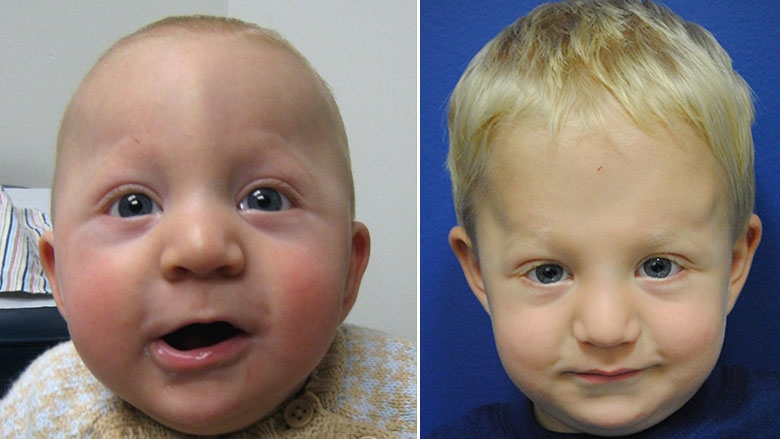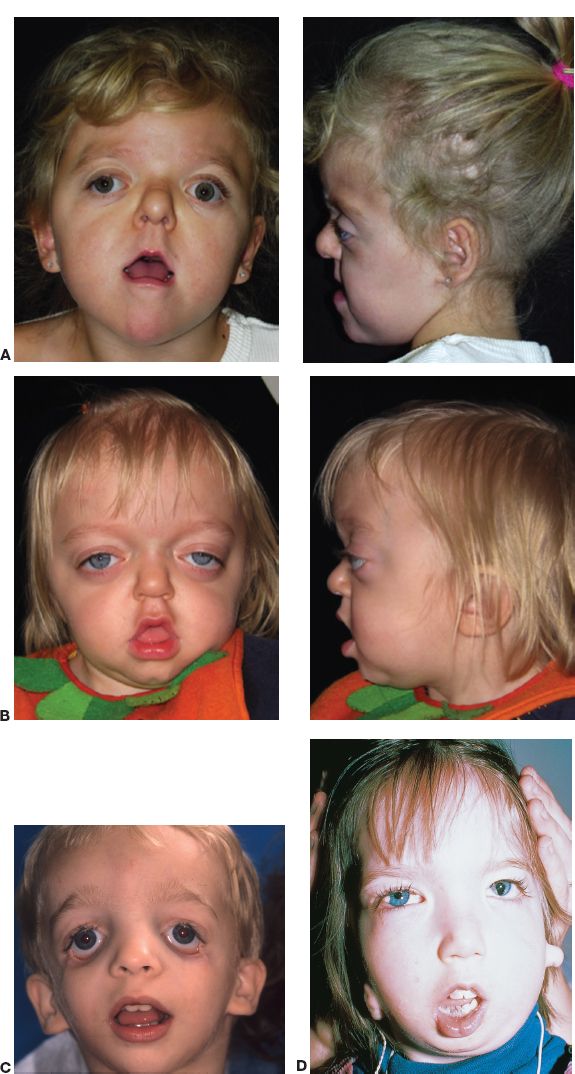Disorder Due To Mutation To The FGFR2 Gene Presentation
| Disorder due to mutation to the FGFR2 gene | ||
|---|---|---|
| The FGFR2 gene is responsible for encoding the fibroblast growth factor receptor 2 protein. Mutations in the FGFR2 gene can lead to a variety of disorders. These disorders are collectively known as FGFR2-related craniosynostosis syndromes. | ||
| 1 | ||
| Craniosynostosis | ||
|---|---|---|
| Craniosynostosis is a condition characterized by the premature fusion of one or more cranial sutures. Mutations in the FGFR2 gene are one of the primary causes of craniosynostosis. Craniosynostosis can affect the shape and development of the skull, leading to various complications. | ||
| 2 | ||
| Types of FGFR2-related craniosynostosis syndromes | ||
|---|---|---|
| Apert Syndrome: A rare genetic disorder characterized by craniosynostosis, distinctive facial features, and abnormalities in the hands and feet. Crouzon Syndrome: Another rare disorder that causes craniosynostosis, facial abnormalities, and potential vision and hearing problems. Pfeiffer Syndrome: A genetic disorder that affects the growth of the skull and bones in the hands and feet, leading to distinct facial features and other anomalies. | ||
| 3 | ||
| Common symptoms of FGFR2-related craniosynostosis syndromes | ||
|---|---|---|
| Abnormal head shape, such as a tall and narrow head (scaphocephaly) or a short and wide head (brachycephaly). Facial abnormalities, including underdeveloped midface, protruding eyes, and a beaked nose. Hand and foot abnormalities, such as fused fingers or toes (syndactyly) and wide thumbs or big toes. | ||
| 4 | ||
| Diagnosis of FGFR2-related craniosynostosis syndromes | ||
|---|---|---|
| Physical examination: A thorough evaluation of the head shape, facial features, and extremities. Genetic testing: DNA analysis to identify mutations in the FGFR2 gene and confirm the diagnosis. Imaging studies: X-rays, CT scans, or MRI scans to assess the extent of craniosynostosis and any associated anomalies. | ||
| 5 | ||
| Treatment options for FGFR2-related craniosynostosis syndromes | ||
|---|---|---|
| Surgery: The primary treatment approach involves cranial vault reconstruction to correct the abnormal skull shape and release the fused sutures. Follow-up care: Regular monitoring of growth and development, along with potential interventions for vision, hearing, and other associated issues. Supportive care: Multidisciplinary care involving a team of specialists, including craniofacial surgeons, geneticists, orthodontists, and psychologists. |  | |
| 6 | ||
| Prognosis and outcomes | ||
|---|---|---|
| With early diagnosis and appropriate treatment, individuals with FGFR2-related craniosynostosis syndromes can have improved outcomes. The prognosis varies depending on the specific syndrome, severity of craniosynostosis, and associated anomalies. Long-term management may be required to address potential complications, such as developmental delays, learning difficulties, and psychosocial challenges. | ||
| 7 | ||
| Current research and future directions | ||
|---|---|---|
| Ongoing research aims to better understand the molecular mechanisms underlying FGFR2-related craniosynostosis syndromes. Improved genetic testing methods and tools are being developed to enhance diagnostic accuracy and identify potential therapeutic targets. Advances in surgical techniques and rehabilitation approaches continue to improve outcomes and quality of life for affected individuals. | ||
| 8 | ||
| Support and resources | ||
|---|---|---|
| Genetic counseling: Provides guidance and support to individuals and families affected by FGFR2-related craniosynostosis syndromes. Support groups: Online and local support groups can connect individuals and families facing similar challenges and provide a platform for sharing experiences and resources. Medical centers specializing in craniofacial disorders: Seek specialized care from centers with expertise in managing FGFR2-related craniosynostosis syndromes. | ||
| 9 | ||
| References (download PPTX file for details) | ||
|---|---|---|
| Arnaud E, et al. (2017). FGFR-related cranios... Muenke M, et al. (2019). Molecular genetics o... Sharma VP, et al. (2020). Craniosynostosis. I... |  | |
| 10 | ||







